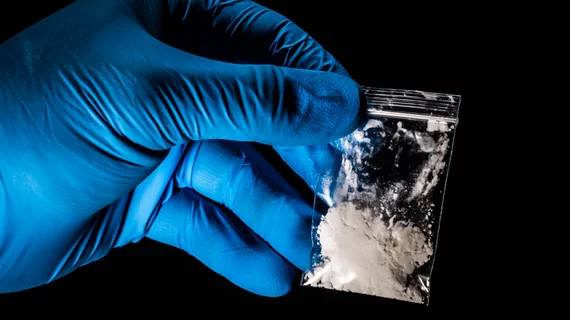DHS considers naming fentanyl a weapon of mass destruction
The Department of Homeland Security (DHS) is considering labeling fentanyl—a popular painkiller and powerful opioid—as a weapon of mass destruction (WMD), according to an internal memo obtained by military news outlet Task & Purpose.
The memo, dated Feb. 22, 2019, and prepared for then-Secretary Kirstjen Nielsen by James F. McDonnell, DHS assistant secretary for countering weapons of mass destruction (CWMD), outlined how the drug could be perceived as a threat to U.S. safety.
“Fentanyl’s high toxicity and increasing availability are attractive to threat actors seeking nonconventional materials for a chemical weapons attack,” McDonnell wrote. “In July 2018, the FBI Weapons of Mass Destruction Directorate assessed that ‘...fentanyl is very likely a viable option for a chemical weapon attack by extremists or criminals.’”
McDonnell was appointed to lead the CWMD office under the Trump administration a little less than a year ago. The flow of fentanyl from regions of China and Mexico has been a recent target of President Trump’s, prompting the introduction and passage of the STOP Act, which targets fentanyl at the U.S.-Mexico border.
In 2017, Trump declared the opioid crisis a public health emergency. In August 2018, he called the influx of fentanyl from China to the U.S. “almost a form of warfare.”
Fentanyl is a widespread and largely illegally trafficked opioid that’s 50 to 100 times more potent than morphine. According to a report issued by Politico and the Harvard T.H. Chan School of Public Health last year, most Americans believe heroin and prescription painkillers like Percocet, OxyContin or Vicodin are major causes of an increase in opioid-related deaths; 60% believe fentanyl is a significant contributor.
In his memo, McDonnell wrote there has been a “reinvigorated interest in addressing fentanyl and its analogues as WMD materials due to the ongoing opioid crisis,” suggesting the CWMD office could assist in counter-fentanyl efforts by developing new technologies and facilitating others’ research.
He also said other senior leaders in the Department of Defense, including Navy Adm. Craig Faller, commander of the U.S. Southern Command, had proposed naming fentanyl as a WMD.
Nuclear defense expert Dan Kaszeta told Task & Purpose that using fentanyl as a WMD is a “fringe scenario,” noting there are “literally dozens” of toxic chemicals that are easily accessible and could be weaponized. An anonymous senior defense official agreed, saying a more feasible threat would be the production of sarin or mustard gas.
“Anybody with a college-level degree in chemistry can manufacture chemical weapons agents,” the official said. “I cannot see any scenario where a nation-state would use fentanyl on the battlefield, or, for that matter, a terrorist using a really toxic chemical like fentanyl in an attack when they could just sell it for funding the purchase of firearms and explosives or steal an industrial chemical instead.”

